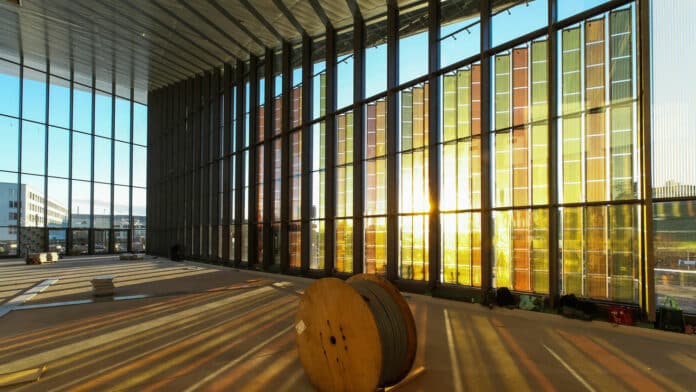Mesoscopic dye-sensitized solar cells (DSCs) were invented in the 1990s by Brian O’Regan and Michael Grätzel at the École Polytechnique Fédérale de Lausanne (EPFL) in Switzerland. Since then, they have been commonly known as “Grätzel cells,” and recently, a group of scientists led by Grätzel announced a new breakthrough.
Researchers have increased the power conversion efficiency of dye-sensitized solar cells (Grätzel cells) beyond 15% in direct sunlight and 30% in ambient light conditions. The key achievement was the development of photosensitizer materials that can absorb the entire light spectrum.
The dye-sensitized solar cells convert light into electricity through photosensitizers. These dye compounds absorb light and inject electrons into an array of oxide nanocrystals which subsequently are collected as electric current.
In DSCs, the photosensitizers are attached to the surface of nanocrystalline mesoporous titanium dioxide films, which are saturated with redox-active electrolytes or solid charge-transport material. The entire design aims to generate electric current by moving electrons from the photosensitizer to an electrical output such as a device or storage unit.
DSCs are transparent and can be fabricated in multiple colors for a reasonable price. They are already being used in skylights, greenhouses, as well as glass facades, such as those adorning the SwissTech Convention Center. Also, their lightweight, flexible versions are now commercially sold on a large scale for the electrical powering of portable electronic devices.
The recent advancements in the development of sensitizers, redox mediators, and device structures have improved the performance of DSCs under both solar sunlight and ambient light conditions. To further enhance their efficiency, it is pivotal to control the assembly of dye molecules on the surface of titanium dioxide nanoparticle films that favor the generation of electrical charge.
EPFL researchers have developed a way of improving the packing of two newly designed photosensitizer dye molecules to enhance the DSC’s photovoltaic performance. Together, the two newly designed photosensitizers can harvest light quantitatively across the entire visible domain.
The new technique involves pre-adsorbing a monolayer of a hydroxamic acid derivative on the surface of nanocrystalline mesoporous titanium dioxide. This slows down the adsorption of the two sensitizers, enabling the formation of a well-ordered and densely packed layer of sensitizer at the titanium dioxide surface.
Using this method, the team was able to create DSCs with a power conversion efficiency of 15.2% for the first time under standard global simulated sunlight, with long-term operational stability tested over 500 hours. Devices with a larger active area of 2.8 square-centimeter exhibited a power conversion efficiency of 28.4% to 30.2% over a wide range of ambient light intensities, along with high stability.
“Our findings pave the way for facile access to high-performance DSCs and offer promising prospects for applications as power supply and battery replacement for low-power electronic devices that use ambient light as their energy source,” researchers said.
Journal reference:
- Yameng Ren, Dan Zhang, Jiajia Suo, Yiming Cao, Felix T. Eickemeyer, Nick Vlachopoulos, Shaik M. Zakeeruddin, Anders Hagfeldt, and Michael Grätzel. Hydroxamic acid pre-adsorption raises the efficiency of cosensitized solar cells. Nature, 2022; DOI: 10.1038/s41586-022-05460-z
